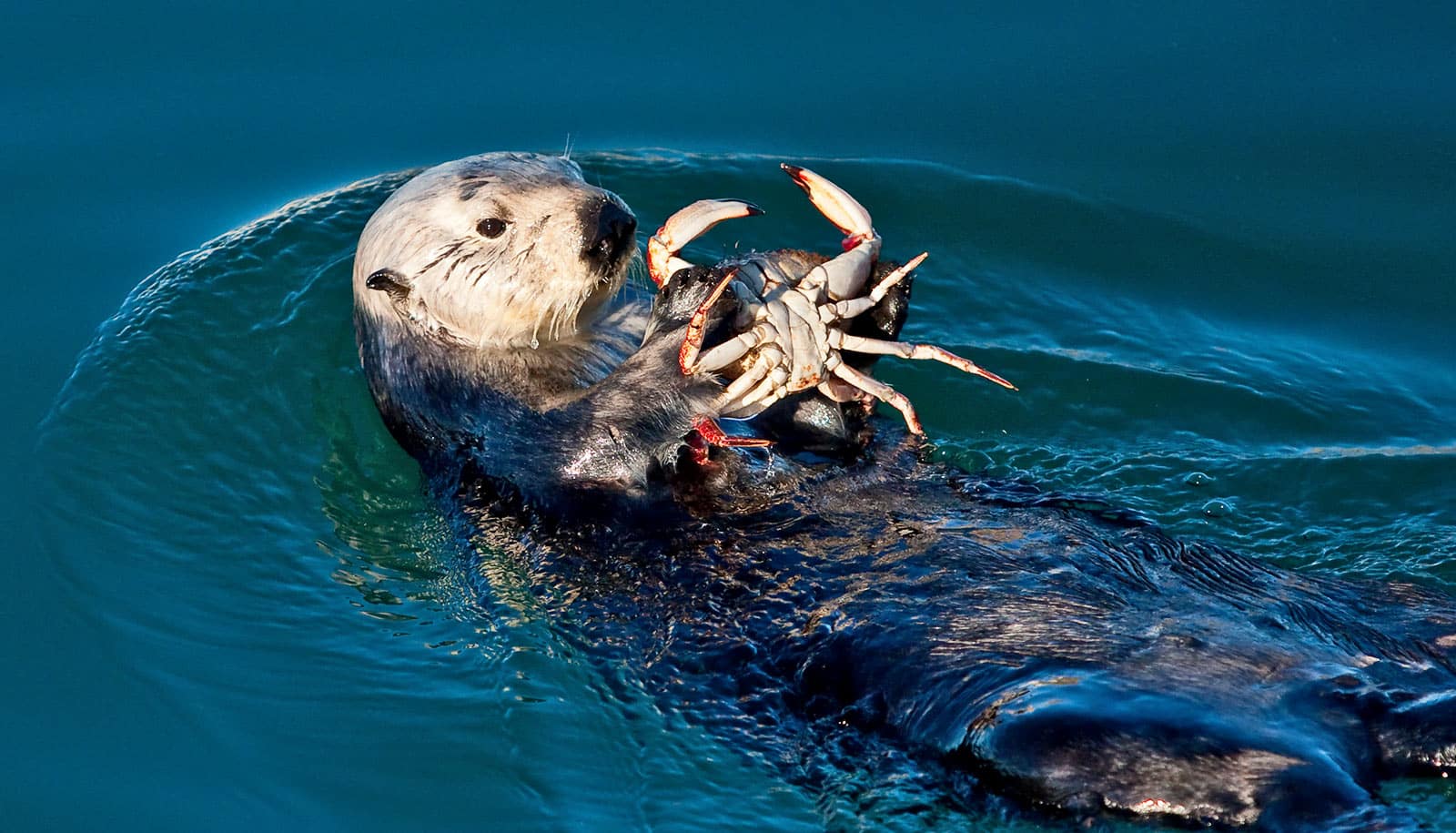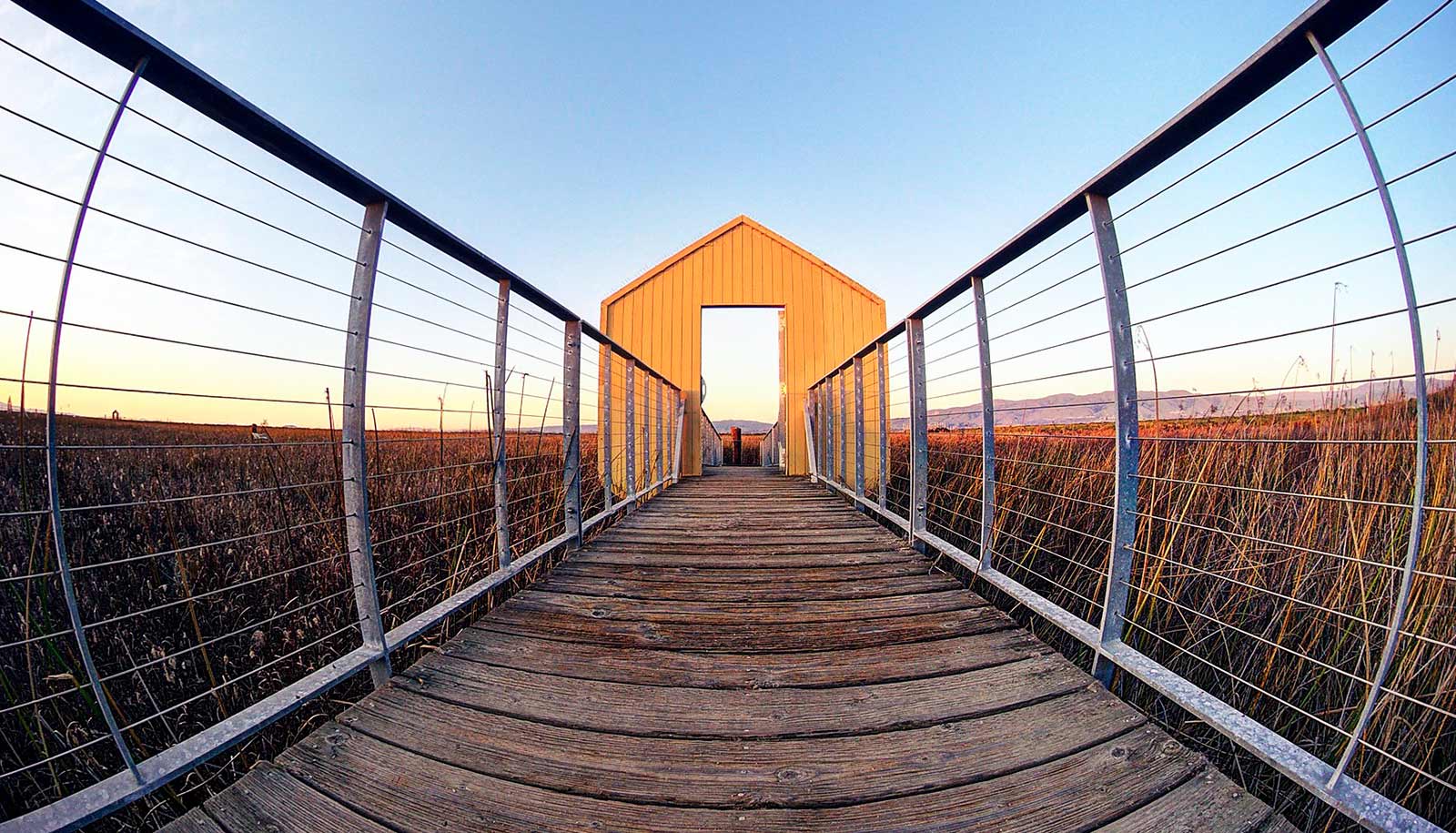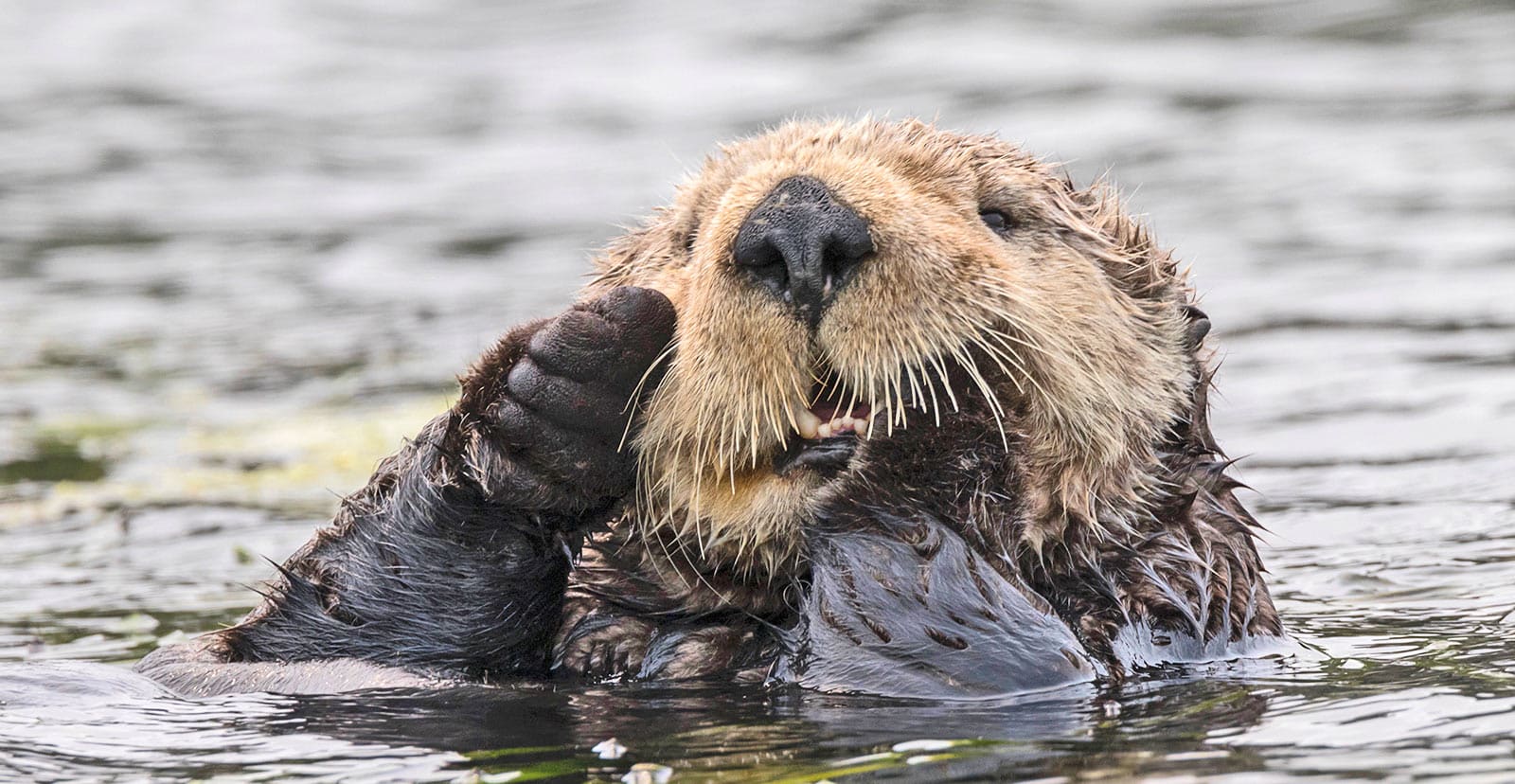
"It would cost millions of dollars for humans to rebuild these creek banks and restore these marshes," Brian Silliman says. "The sea otters are stabilizing them for free in exchange for an all-you-can-eat crab feast." (Credit: Getty Images )
Sea otters’ love of crabs gives salt marshes a second chance
"The sea otters are stabilizing [these creek banks] for free in exchange for an all-you-can-eat crab feast."
Sea otters are making an impact as they return to the wetlands of Central California, researchers report.
Remarkable changes have occurred in the landscape as these adorable animals recolonize their former habitat in the Elkhorn Slough, a salt marsh-dominated coastal estuary in Monterey County.
The erosion of creek banks slowed on average by 69% after the sea otter population fully recovered at a time when rising levels, stronger tidal currents, and nutrient pollution should be causing the opposite.
Marsh and streamside vegetation is rebounding and putting down densely matted root systems that can increasingly stand firm against flooding and surging waves. These features, essential for making the estuary resilient, are on the mend in large part due to the sea otters’ insatiable appetite for herbivorous marsh crabs , according to a study appearing in Nature .
“These top predators can have a large effect on the habitats that they exist in. But we don’t know what those effects are unless we directly test them,” says coauthor Kathryn Beheshti, an assistant researcher at the University of California, Santa Barbara’s Marine Science Institute.
Crabs are an important part of the slough ecosystem, but too many of them can ruin the wetland’s integrity.
“Crabs eat salt marsh roots, burrow into salt marsh sediments, and over time can cause a marsh to erode and collapse. This had been happening at Elkhorn Slough for decades until sea otters recolonized the estuary in the mid-1980s and expanded into salt marshes over the last decade,” says lead author Brent Hughes, an associate professor of biology at Sonoma State University.
“Our study—which draws on field experiments, modeling and before-and-after measurements—underscores the far-reaching benefits that can cascade through an ecosystem when a top predator is reintroduced,” says senior author Brian Silliman, a professor at Duke University. “It begs the question: In how many other ecosystems worldwide could the reintroduction of a former top predator yield similar benefits?”
West Coast estuaries were once an important foraging and nursery habitat for sea otters, who found an ample supply of tasty crabs and safe shelter for newborn otter pups in their protective marshes. Otters lack the thick insulation of most other marine mammals, relying instead on their incredible metabolism to keep them warm in frigid Pacific waters. Adult otters need to eat about a quarter of their body weight—around 20 to 25 pounds—daily, and crabs are one of their favorite meals.
Sea otters had flourished in estuaries like Elkhorn Slough and San Francisco Bay until fur traders hunted the local sea otter population nearly to extinction. As a result, the slough’s crab population exploded.
“After a few decades, in areas the sea otters had recolonized, salt marshes and creek banks were becoming more stable again, despite rising sea levels, increased water flow from inland sources, and greater pollution,” Hughes says.
To test what role sea otters were playing in all this, the researchers conducted large-scale surveys across 13 tidal creeks. Data on the slough’s erosion stretches back to the 1930s, and meticulous sea otter counts exist from the 1980s onward, just as the species was beginning to recolonize the habitat. The authors combined this data into a model simulating the effect otters have on the system.
“What we found is, the more sea otters you add the more the erosion goes down,” Hughes says. Monitoring of otter activity and erosion corroborated the model’s results.
The team also conducted small-scale field experiments at five locations around the estuary for nearly a decade. Sea otters were excluded from some test sites but allowed to recolonize others. Measurements and observations, collected on the ground and by aerial photography, confirmed that at sites with large populations of otters, erosion had slowed almost to stop by the study’s end. Some marshes were even expanding. Modeled simulations yielded similar outcomes.
“The return of the sea otters didn’t reverse the losses, but it did slow them to a point that these systems could restabilize despite all the other pressures they are subject to,” says Hughes. “That suggests this could be a very effective and affordable new tool for our conservation toolkit.”
“It would cost millions of dollars for humans to rebuild these creek banks and restore these marshes,” Silliman says. “The sea otters are stabilizing them for free in exchange for an all-you-can-eat crab feast.”
The idea of predators influencing vegetation via their impact on herbivores has been around since at least the 1940s. Famed naturalist Aldo Leopold wrote about mountains denuded by deer in the absence of wolves in his book A Sand County Almanac (Oxford University Press, 1949).
Unfortunately, previous papers on this topic were observational, meaning they could only establish a correlation between predators, prey, and vegetation, not a causal relationship. But because Hughes and his team could conduct actual exclusion experiments, they were able to causally link sea otter predation to bank stability.
“There are important theoretical implications as well,” Silliman says. “This work overturns the well-established, bottom-up paradigm that coastal geomorphology is governed by interactions between physical forces and plant structure. Our results unequivocally show that predators also play a keystone role in controlling the course of these tidal creeks.”
UC Santa Barbara’s Beheshti has begun a restoration project in Elkhorn Slough that will restore eelgrass habitat in natural and restored tidal creeks.
“We’re hoping to evaluate whether restoring eelgrass in these areas can further mitigate bank erosion,” she says. “We expect sea otters to use this habitat, similar to how they have used past restored eelgrass meadows in the main channel of the estuary.”
Source: UC Santa Barbara
The post Sea otters’ love of crabs gives salt marshes a second chance appeared first on Futurity .
Share this article:
This article uses material from the Futurity article, and is licenced under a CC BY-SA 4.0 International License. Images, videos and audio are available under their respective licenses.
Related Articles:
Drowning salt marshes threaten coastal communities
Dec. 29, 2020 • futurityHow cat poop kills California sea otters
Aug. 29, 2019 • futurityLinks/images:
- https://www.futurity.org/sea-otters-toxoplasmosis-parasites-2897082/
- https://www.futurity.org/sesarma-crabs-salt-marsh-ecosystems-2404352-2/
- https://doi.org/10.1038/s41586-023-06959-9
- https://www.futurity.org/sea-otters-skeletal-muscle-metabolism-2593932/
- https://www.futurity.org/barrier-island-storms-hurricanes-wildlife-2633972/
- https://news.ucsb.edu/2024/021341/sea-otters-stabilize-salt-marsh-banks-they-recolonize-californian-estuary
- https://www.futurity.org/sea-otters-salt-marshes-conservation-3173872/
- https://www.futurity.org


